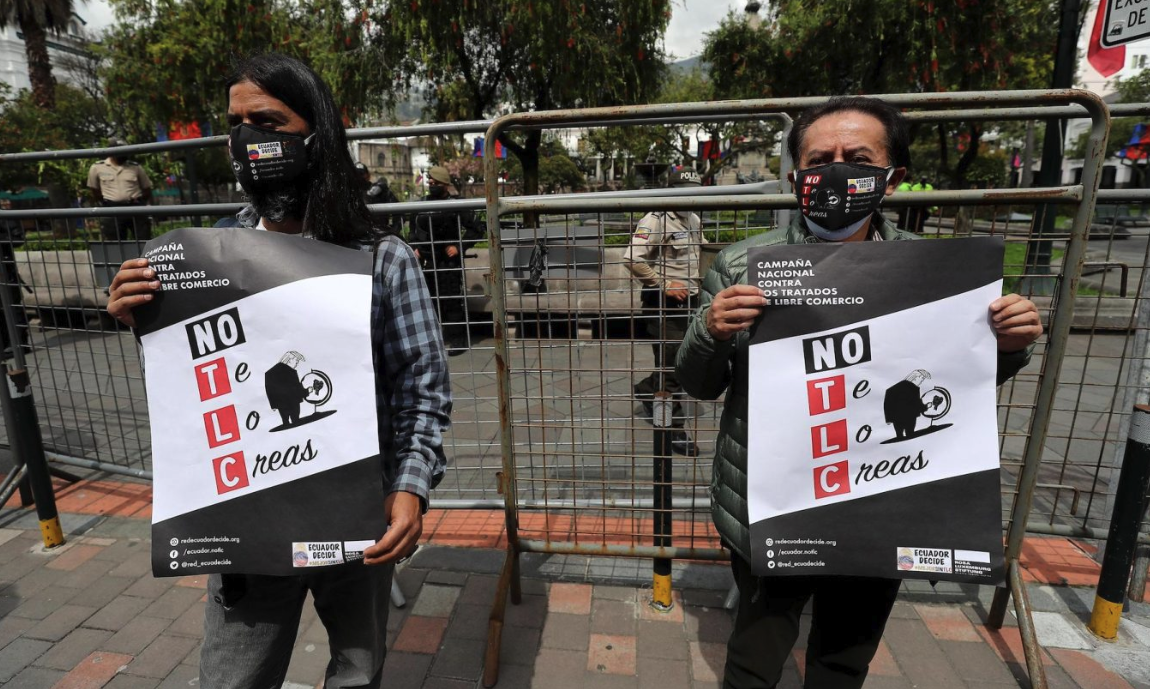Ecuador and China enter a new cycle of trade relations. As of May 1, 2024, the Asian giant and the small South American nation began the implementation of the Free Trade Agreement (FTA), focusing on “economic cooperation and bilateral cooperation”. The hope of implementing trade liberalization and encouraging investment, in addition to facilitating economic and social development, is one of the hopes of an Ecuador hit by a crisis in its fiscal coffers and high rates of violence. In this context of evident political instability, the agreement was criticized by various sectors of Ecuadorian society, with obvious media implications.
Indeed, the media has a significant influence on the formation of public opinion regarding this trade agreement. Out of 89 articles published in digital portals of local and international media between February 15, 2024 (when the National Assembly ratified the agreement) and April 30, 2024 (one day before the agreement entered into force), at least 32% of these included the terms “fear”, “inequality” and “concern” when referring to the Ecuador-China FTA. Actions to protect Ecuador’s local economies and care for the environment were two of the most recurring themes among the experts invited to participate in the Spanish-language journalistic dialogues.
It is undeniable that the opening of the Chinese trade agreement with a Latin American nation reflects its intention to seek non-Western allies to diversify its economy in response to globalization and increasing multipolarity. Recently, China has shown a growing interest in Latin America, especially in trade and investment, with initiatives focused on financing Latin American governments and technological exchange, among other areas.
This, in turn, is a sign of the general increase in China’s presence in an international system that is demanding greater post-cooperation financing and trade routes to alleviate the effects of the economic and health crises. In this regard, in the Ecuador-China case alone, it is estimated that tariffs will be gradually eliminated for 99.6% of the South American country’s exports in a decade.
The media and public opinion
Unquestionably, the media’s interpretation of international politics shapes public opinion. In the case of this agreement, there are two sectors around which the production of journalistic content revolves: automotive and plastics. On the one hand, the media have echoed the impact that this FTA will have on the reduction in sales costs of Chinese cars, which in March 2024 led the Ecuadorian market with 4760 vehicles sold (36% of total sales in this month). On the other hand, plastic is another of the issues addressed in this trade process. A month before the ratification of the agreement, several Ecuadorian media highlighted the fact that this instrument could be the excuse for the importation of waste. Despite this, from the date of ratification until April 30, the issue was put on the back burner, emphasizing the decrease in car prices and the possible advantages for the Ecuadorian agricultural sector.
One of the pending issues in the coverage of this agreement is the cultural exchange between both nations. China is not only a market of 1.4 billion inhabitants where it is possible to market new Ecuadorian products. The Asian giant also has a soft power that has been clearly stated in its white paper entitled “A Global Community of Shared Future: China’s Proposals and Actions” (September 2023). This specifies the need to increase exchanges between nations to foster inclusiveness and respect for differences. In other words, in its integration model it is impossible to think that trade does not go hand in hand with culture.
At this precise moment, sustaining whether there is a positive or negative image of the China-Ecuador Agreement in the media is complex due to the technical-economic details on which the journalistic discussion has focused. For now, the government has developed an intense agenda to publicize the key points for the first phase of implementation of this instrument. Here the question arises as to what extent journalists can put aside their values and beliefs when reporting on the subject, considering aspects such as, for example, whether Ecuadorian interests can be balanced with Chinese interests.
Accusations that the agreement is a massive sale of natural resources and strategic political and economic interests have been especially common in the months leading up to the treaty’s entry into force, but there is also growing interest in price reductions in areas such as transportation and technology, two sectors of utmost importance when measuring the growth of nations.
This text was originally published on the REDCAEM website.
*Translated by Janaína Ruviaro da Silva from the original in Spanish.













